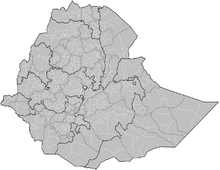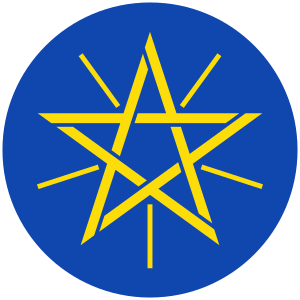Districts of Ethiopia
Districts, or woreda (Amharic: ወረዳ; Oromo: Aanaalee) (also spelled wereda), are the third-level administrative divisions of Ethiopia. They are further subdivided into a number of wards (kebele) or neighbourhood associations, which are the smallest unit of local government in Ethiopia.

 |
|---|
| This article is part of a series on the politics and government of Ethiopia |
|
|
Judiciary |
|
Related topics |
Overview
Woredas are typically collected together into zones, which form a region; districts which are not part of a zone are designated Special Districts and function as autonomous entities. Districts are governed by a woreda council whose members are directly elected to represent each kebele in the district. There are about 670 rural woreda and about 100 urban woreda. Terminology varies, with some people considering the urban units to be woreda, while others consider only the rural units to be woreda, referring to the others as urban or city administrations.[1]
Although some districts can be traced back to earliest times—for example the Yem special woreda, the Gera and Gomma woredas which preserve the boundaries of kingdoms that were absorbed into Ethiopia, and the Mam Midrina Lalo Midir woreda of a historic province of Ethiopia (in this case, two of the districts of Menz)—many are of more recent creation. Beginning in 2002, more authority was passed to districts by transferring staff and budgets from the regional governments.
See also
- List of districts in the Afar Region
- List of districts in the Amhara Region
- List of districts in the Benishangul-Gumuz Region
- List of districts in the Gambela Region
- List of districts in the Oromia Region
- List of districts in the Somali Region
- List of districts in the Southern Nations, Nationalities, and Peoples' Region
- List of districts in the Tigray Region
References
- Yilmaz, Serdar; Venugopal, Varsha (2008). Local Government Discretion and Accountability in Ethiopia (PDF). Working Paper 08-38. International Studies Program, Andrew Young School of Policy Studies, Georgia State University. pp. 2–5. Archived from the original (PDF) on 20 October 2013. Retrieved 22 June 2013.